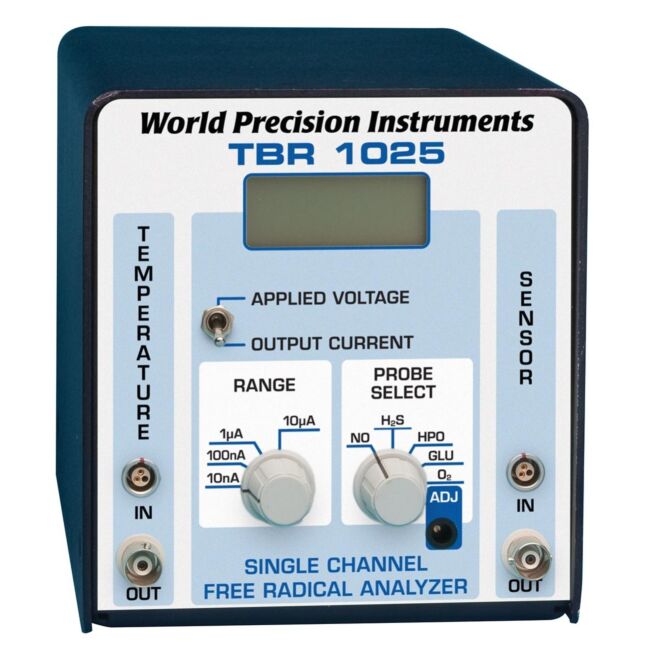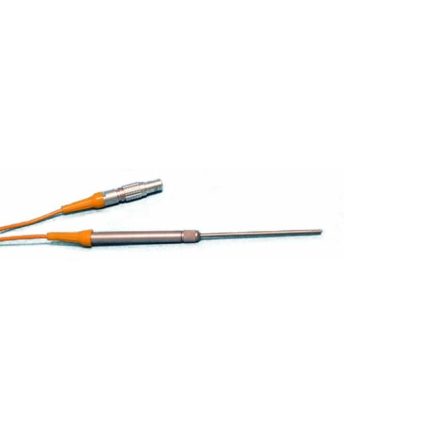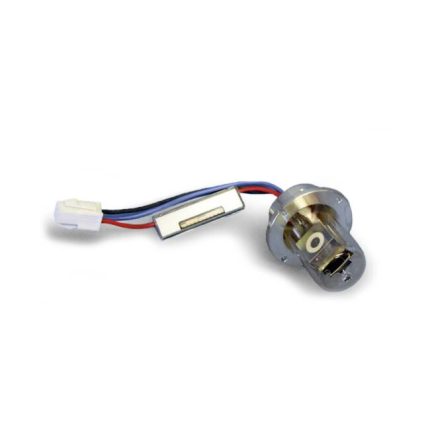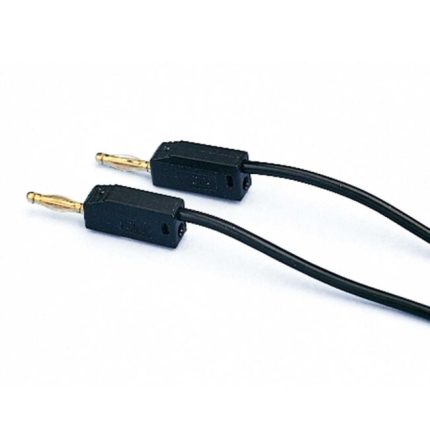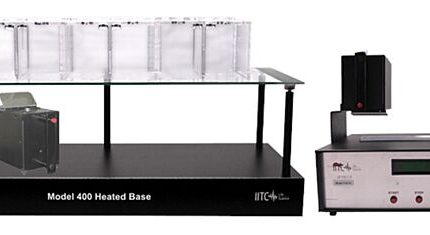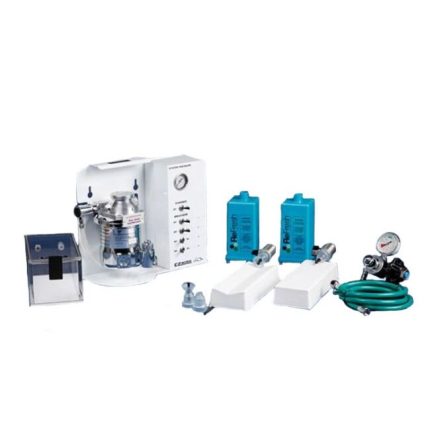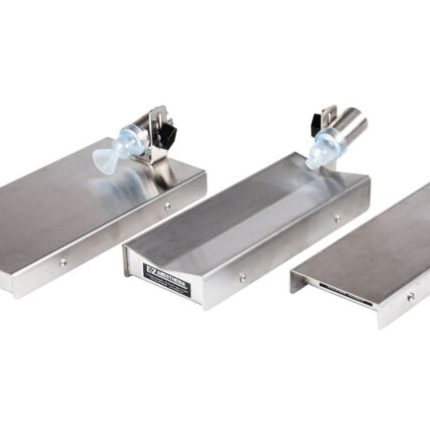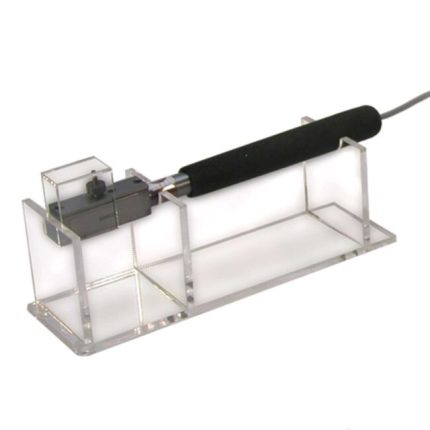| Power | 100 ~ 240 VAC, 50-60 Hz, | ||||||||||||||||||||
| Operating Temperature (ambient) | 0 – 50°C (32 – 122°F) | ||||||||||||||||||||
| Operating Humidity (ambient) | 15 – 70% RH non-condensing | ||||||||||||||||||||
| Warm up Time | < 5 min. | ||||||||||||||||||||
| Dimensions | 135 X 419 X 217 mm (5.25″ X 16.5″ X 8.16″) | ||||||||||||||||||||
| Weight | 1.35 kg (3 lb.) | ||||||||||||||||||||
| Display Functions | 18 mm (0.7″) LCD readout, 4.5 digit Polarization Voltage (mV) Current input (nA, µA) | ||||||||||||||||||||
| Controls | Power (on/off) Current Input Range Polarization Voltage |
||||||||||||||||||||
| Analog Output Range | ±10 V (continuous) | ||||||||||||||||||||
| Analog Output Impedance | 10 KΩ | ||||||||||||||||||||
| Channel to Channel Isolation | >10 GΩ | ||||||||||||||||||||
| Channel to Output Isolation | >10 GΩ | ||||||||||||||||||||
| Power Supply to AC Line Isolation | >100 MΩ | ||||||||||||||||||||
| Analog Output Drift | < 10 pA/hr. | ||||||||||||||||||||
| Temperature Input: Number of Channels | 1 | ||||||||||||||||||||
| Temperature Input: Sensing Element | Platinum RTD, 1000 Ω | ||||||||||||||||||||
| Temperature Input: Range | 0-100°C | ||||||||||||||||||||
| Temperature Input: Accuracy | ± 1°C | ||||||||||||||||||||
| Temperature Input: Resolution | 0.1°C | ||||||||||||||||||||
| Temperature Input: Analog Output | 31.25 mV/°C (continuous) | ||||||||||||||||||||
| Amperometric Input: Number of Amperometric Channels | 4 | ||||||||||||||||||||
| Amperometric Input: Signal Bandwidth | 0-3 Hz | ||||||||||||||||||||
| Amperometric Input: Polarization Voltage (selectable via rotary switch) Nitric Oxide | 865 mV | ||||||||||||||||||||
| Amperometric Input: Polarization Voltage (selectable via rotary switch) Hydrogen Sulfide | 150 mV | ||||||||||||||||||||
| Amperometric Input: Polarization Voltage (selectable via rotary switch) Hydrogen Peroxide | 450 mV | ||||||||||||||||||||
| Amperometric Input: Polarization Voltage (selectable via rotary switch) Glucose | 600 mV | ||||||||||||||||||||
| Amperometric Input: Polarization Voltage (selectable via rotary switch) Oxygen | 700 mV | ||||||||||||||||||||
| Amperometric Input: Polarization Voltage (selectable via rotary switch) ADJ (user adjustable) | ± 2500 mV | ||||||||||||||||||||
| Polarization Voltage Accuracy | ± 5 mV | ||||||||||||||||||||
| Polarization Voltage Display Resolution | ± 1mV | ||||||||||||||||||||
| Current measurement Performance: |
|
||||||||||||||||||||
| Notes: | *Instrument performance is measured as the (max-min) over 20 seconds period with open input. Typical values are given at 3 Hz and 0.3 Hz bandwidth. | ||||||||||||||||||||
| Typical sensor performance with TBR4100: ISO-NOPF100 noise | 0.2 nM NO (< 2pA **) | ||||||||||||||||||||
| Notes: | **Sensor noise is measured as the (max-min) over a 20 seconds period with the sensor immersed in 0.1 M CuCl2 solution. |
ONE-CHANNEL FREE RADICAL ANALYZER
Сatalog number:
TBR1025
Categories: Analyzers, Instruments/Platform, TBR1025 Analyzer
Description
Shipping & Delivery
Related products
Сatalog number:
5373
Low-Noise Cable for Microelectrode Holder, A: pin/jack, B: pin/jack
PLANTAR TEST/TAIL FLICK METER FOR RAT AND MOUSE
This unit, which is designed for testing narcotics and strong non-narcotic drugs, offers both Plantar (Hargreaves Method) and Tail Flick testing with a single unit. Either testing system is also available individually. In plantar mode, the visible light/heat source is directed at the paw or other desired body part, and in tail flick mode it is directed at the subjects’ tails. Test up to 12 mice or 6 rats simultaneously. If desired, other animals like cats and rabbits may also be used. Tests are simple to setup. The focused, radiant heat/light source creates a 4 x 6 mm intense spot. Because the light is visible, you know when the test starts and ends. The equipment is silent (no whining or clicking sounds) to avoid triggering an automatic response in conditioned animals. You can set a humane cutoff timer that automatically shuts off the heat if no response is observed during the designated time frame.
Digital Anesthesia System
E-Z Anesthesia® has taken the vaporizer to the next level. In an era of advancing technology, people have asked for the vaporizer to follow along with the digital trend. E-Z Anesthesia has taken the best of the both worlds and combined them into a very reliable, user-friendly, state-of-the-art system. The Digital Anesthesia System, AD-5000, enhances the always reliable TEC 3 vaporizer.
Von Frey Probe
To assess mechanical allodynia, which is a painful response to a light touch or pressure from a stimulus that is not normally painful, the Electronic von Frey Anesthesiometer was developed. The Electronic von Frey meter uses one of 15 different flexible von Frey hairs called “SuperTips™” (or rigid tips up to 800 grams). Each hair, regardless of model chosen, is exactly 0.8 mm in diameter. This uniformity of design eliminates false readings and allows for comparison of test results. The Electronic von Frey can be used with chart recorders and analog/digital converters, and it never needs calibrated. This system includes either a 90, 800 or 1,000 gram probe. Mesh stands are available in a variety of sizes for large group studies.
Сatalog number:
EZ-124DV
Anesthesia Oxygen Output Splitter
Сatalog number:
CPVC4050G

